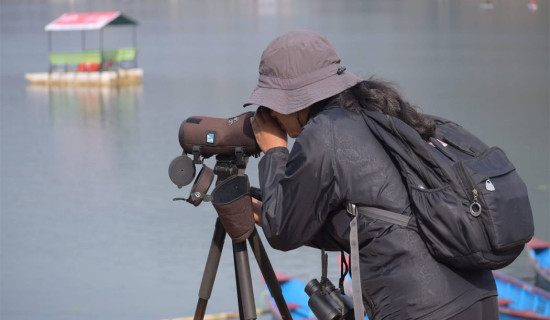- Wednesday, 14 January 2026
Ensure Aviation Safety
This week began in a way hopefully no other week ever will – with the worst domestic plane crash in Nepal’s aviation history. A Yeti Airlines ATR aircraft with the call sign 9N-ANC carrying 68 passengers and four crew members fell out of the sky on Sunday. This accident comes less than eight months after a Tara Air DHC-6 aircraft crashed in Mustang, killing all 22 people on board. Tara is a company owned by Yeti.
It would not be right to speculate about the causes and nature of Sunday’s accident as the crash investigation commission is doing its job. However, one thing is clear, the tragedy, unlike many other air disasters in Nepal, was not brought by bad weather.
Bad weather is an all-too-familiar cause of aviation accidents in Nepal. In 2019, an Air Dynasty (subsidiary company of Yeti) helicopter carrying six passengers, including the then Minister for Culture, Tourism and Civil Aviation Rabindra Adhikari and Yeti Airlines’ Managing Director Ang Tshering Sherpa, crashed in Taplejung due to poor visibility.
Adverse weather is also considered to have caused the 2011 Buddha Air crash when a Beechcraft on a sightseeing trip to Mount Everest hit a hill near Lalitpur killing all 19 on board.
In 1992, an Airbus 310 Thai Airways flying from Bangkok hit a mountain 37 kilometres north of Kathmandu. There were several causes of the crash including a lack of pilot training and failure of the plane’s flaps. However, investigators had also found that inclement weather conditions interfered with the pilot’s ability to communicate with the Tribhuvan International Airport’s air traffic controller.
The Civil Aviation Authority of Nepal (CAAN)’s annual Aviation Safety Reports identify three main causes of accidents for fixed-wing aircraft in Nepal – Controlled Flight into Terrain (CFIT), Loss of Control in Flight (LOC-I) and Runway Excursions (RE). Among them, it is internationally accepted that bad weather can contribute to CFIT, wherein an airworthy aircraft, under pilot control, is unintentionally flown into an obstacle like a mountain or the ground. These repeated tragedies have caused many national and international parties to question the safety of Nepali skies. The loss of over 90 lives in less than a year has shaken passenger confidence in the nation’s aviation sector, and has raised questions about its practices.
But, in the interest of fairness, we must note that the International Civil Aviation Organisation (ICAO) awarded Nepal an effective implementation score of 70.1 per cent in its safety audit conducted in the country from April 13 to 25 last year. This score, awarded under ICAO’s Universal Safety Oversight Audit Programme, is above both the global average of 67.2 per cent and the average for the Asia-Pacific region which is 61.4 per cent and shows that the Nepali sky is not dangerous.
CAAN officials also regularly tout this audit, and rightly so, to show the improvements the country has made in enhancing air safety. However, minor, non-fatal incidents involving domestically flying aircraft continue to be reported with an unnerving frequency. Almost every other month, we hear of planes making landings or failing to take off due to issues with their parts or technology. Of course, Nepal is not the only country where such cases occur but that does not mean we let our guard down and wait for a fatal catastrophe before we do something.
Also, while we talk about aviation safety, we must mention that Nepal continues to remain on the European Union’s aviation blacklist and Nepali carriers continue to be banned from flying over the 27-country bloc. The European Commission put Nepal on its Air Safety List back in 2013 expressing concerns about its safety. That status has not changed since. There were hopes that Nepal would be removed from the list last year but, as per the list, “all air carriers certified by the authorities with responsibility for regulatory oversight in Nepal continue to be prohibited from flying over the Union’s skies” because, “at this time, there are no grounds for amending the list of air carriers, which are subject to an operating ban within the European Union with respect to air carriers from Nepal.” The EU has long raised concerns about the CAAN being both a regulator and a service provider for the aviators of Nepal. It has maintained that this presents a conflict of interest.
However, during a meeting on November 10, 2022, the CAAN provided the European Commission with documents about the adoption of new regulations which, it assured, would ensure the functional separation between its regulatory and service provider roles. But it appears that these assurances were not enough.
At the end of all this though, the most we can do is hope. Hope that we never see a loss of life on the scale we saw this week. Hope that this 35th plane crash since the turn of the century will be the last.














